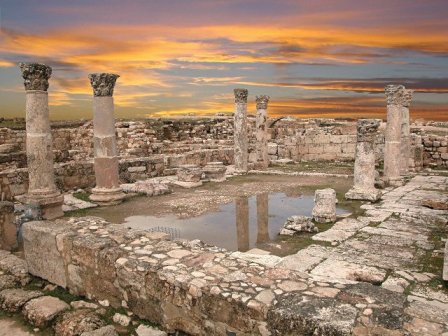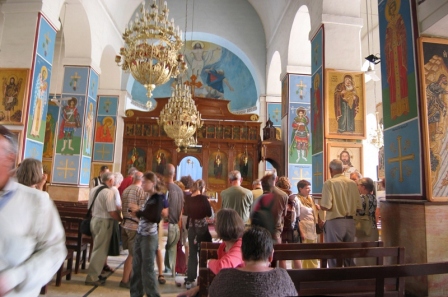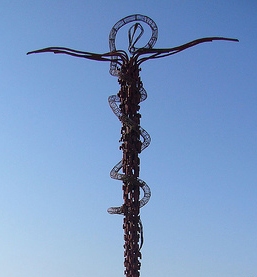
HOTELS IN MADABA JORDAN - MADABA JORDAN
HOTELS - فنادق في
مادبا الأردن
DISCOUNT UP TO 70%
|
NEW STEPS Travel & Tourism Licensed by the Ministry of Tourism
Phone: + 961 4 713 467 E-mail: [email protected]
|
Hotels Reservation in Madaba, Jordan
Book now, pay on check out Version fran�aise اللغة العربية
For phone booking or last minute booking, please call:
00961 4 713 467 or 00961 4 716 467 or 00961 4 716 649
 You can reserve rooms in any of the
Hotels below,
You can reserve rooms in any of the
Hotels below,
just click on the hotel for full listings with description and pictures and then
send us an e-mail with details of your booking.
![]()
We've reduced our 2012 prices. Click on each hotel for details.
|
Hotels 5* in Madaba
|
|
|
Janna Spa &
resort Hotel 5*
The Janna Spa and Resort is located 30 Km away from the
?mosaic? city of Madaba and is easily reachable by car or bus; it is also a 50
minute drive from Queen Alia International Airport and 60 minutes away from the
capital city of Amman through the newly constructed road and along the Dead Sea.............(more
details and special rates)
|
|
|
Hotels 3* in Madaba
|
|
|
Madaba Inn Hotel 3* Welcome to the Madaba Inn Hotel, strategically located in the heart of Madaba. It is opposite the famous St. George Church, known for its mosaics, and a convenient drive from Mount Nebo, Ma'in springs and the Dead Sea.......From 85$ per room.............(more details and special rates)
|
Mosaic City
Hotel 3*
The Mosaic City Hotel is
 an
intimate hotel that makes you feel right at home. The
hotel has 21 rooms and is located in the very heart of Madaba, within short walking distance from the Church of
St. George which houses the famous mosaic map of the
Holy Land.
....From 70$
per room.......(more
details and special rates) an
intimate hotel that makes you feel right at home. The
hotel has 21 rooms and is located in the very heart of Madaba, within short walking distance from the Church of
St. George which houses the famous mosaic map of the
Holy Land.
....From 70$
per room.......(more
details and special rates)
|
|
Salome Hotel 3*
A new-generation economy
hotel,
|
|
|
Hotels 2* in Madaba
|
|
Rumman Hotel 2*
 The
new and modern Rumman Hotel is a cozy, family-run business. It is
quietly located only a 10-minute walk from the historical centre of
Madaba, also known as the City of Mosaics. The
new and modern Rumman Hotel is a cozy, family-run business. It is
quietly located only a 10-minute walk from the historical centre of
Madaba, also known as the City of Mosaics. ......(more details and special rates)
|
|
Welcome to Madaba
Just 30 kilometers from Amman, along the
5,000-year-old Kings� Highway, is one of the most memorable places in the Holy
Land. After passing through a string of ancient sites, the first city you reach
is Madaba, known as the �City of Mosaics".
Best known for its spectacular Byzantine and Umayyad mosaics, Madaba is home to
the famous 6th century Mosaic Map of Jerusalem and the Holy Land. With two
million pieces of vividly colored local stone, it depicts hills and valleys,
villages and towns as far as the Nile Delta.
The Madaba Mosaic Map covers the floor of the Greek
Orthodox Church of St. George, which is located northwest of the city centre.
The church was built in 1896 AD, over the remains of a much earlier 6th century
Byzantine church. The mosaic panel enclosing the Map was originally around 15.6
X 6m, 94 square meters, only about a quarter of which is preserved.
Other mosaic masterpieces found in the church of the Virgin and the Apostles and
in the Archaeological Museum, depict a rampant profusion of flowers and plants,
birds and fish, animals and exotic beasts, as well as scenes from mythology and
the everyday pursuits of hunting, fishing and farming. Literally, hundreds of
other mosaics from the 5th through the 7th centuries are scattered throughout Madaba's churches and homes
In line with Jordan's commitment to restoring and preserving its mosaic masterpieces, Madaba�s extensive archaeological Park and Museum complex encompasses the remains of several Byzantine churches, including the outstanding mosaics of the Church of the Virgin and the Hyppolytus Hall, part of a 6th century mansion.
Close to the Church of the Virgin is the Mosaic
School of Madaba, which operates under the patronage of the Ministry of Tourism.
The only project of its kind in the Middle East, the School trains artisans in
the art of making, repairing and restoring mosaics.
About Madaba
|
Wadi Rum Hotels |
||
| Home |
|
History of Madaba
During its rule by the Roman and Byzantine Empires from the second to the seventh centuries AD, the city formed part of the Provincia Arabia set up by the Roman Emperor Trajan to replace the Nabataean kingdom of Petra. During the rule of the Islamic Umayyad Caliphate, it was part of the southern Jund Filastin.
The first witness of a Christian community in
the city, with its own bishop, is found in the Acts of the Council of
Chalcedon in 451, wherein Constantine, Metropolitan Archbishop of Bostra
(the provincial capital) signed on behalf of Gaiano, "Bishop of the
Medabeni."
The resettlement of the city ruins by 90 Arab Christian families from Kerak, in the south, led by two Italian priests from the Latin Patriarchate of Jerusalem in 1880, saw the start of archaeological research. This in turn substantially supplemented the scant documentation available.
Archaeological finds in Madaba city
The Map of Madaba mosaic was discovered in 1896 and the findings were published a year later. This discovery drew the attention of scholars worldwide. It also positively influenced the inhabitants, who shared the contagious passion of F. Giuseppe Manfredi, to whom the rediscovery of most of the city's mosaics are owed. Madaba became known as the "City of Mosaics" in Jordan.
The northern part of the city turned out to be the area containing the greatest concentration of mosaic monuments. During the Byzantine-Umayyad period, this northern area, crossed by a colonnaded Roman road, saw the building of the Church of the Map, the Hippolytus Mansion, the Church of the Virgin Mary, the Church of Prophet Elijah with its crypt, the Church of the Holy Martyrs (Al-Khadir), the Burnt Palace and the Church of the Sunna' family.
The Madaba Mosaic Map is an index map of the region, dating from the sixth century AD, preserved in the floor of the Greek Orthodox Basilica of Saint George. With two million pieces of colored stone, the map depicts hills and valleys, villages and towns in Palestine and the Nile Delta. The mosaic contains the earliest extant representation of Byzantine Jerusalem, labeled the "Holy City." The map provides important details as to its 6th century landmarks, with the cardo, or central colonnaded street and the Holy Sepulchre clearly visible. This map is one key in developing scholarly knowledge about the physical layout of Jerusalem after its destruction and rebuilding in 70 AD.
Other mosaic masterpieces found in the Church of the Virgin and the Apostles and the Archaeological Museum, depict a profusion of flowers and plants, birds and fish, animals and exotic beasts, as well as scenes from mythology and everyday pursuits of hunting, fishing and farming. Hundred of other mosaics from the 5th through the 7th centuries are scattered throughout Madaba.
The University of Toronto has been excavating in Madaba from 1996 until the present. Their efforts have focused primarily on the west acropolis where an open field has allowed access to uncover the entire sequence of occupation at Madaba from the modern period down to the Early Bronze Age levels. The most visible feature of this area is a 7.5 meter wide fortification wall built sometime in the 9th C. BC, with subsequent rebuilds throughout its history. There is also the remains of a well preserved Byzantine era house at the base of the fortification wall.
In 2010, a 3,000-year-old Iron Age temple containing several figurines of ancient deities and circular clay vessels used in Moabite religious rituals was discovered at Khirbat 'Ataroz near Mabada.
|
Wadi Rum Hotels |
||
| Home |
|
Hammamat Ma'in
Southwest of Madaba is Hammamat
Ma�in, the thermal mineral springs that for centuries have attracted
people to come and immerse themselves in the sites� warm therapeutic waters. There is an excellent 5-star hotel operated by the
well known Six Senses group here, which offers indoor and natural
outdoor hot pools, a swimming pool and spa facilities.
therapeutic waters. There is an excellent 5-star hotel operated by the
well known Six Senses group here, which offers indoor and natural
outdoor hot pools, a swimming pool and spa facilities.
Institute of Mosaic Art and Restoration The Institute was originally created in 1992 as the Madaba Mosaic School, and funded by the Italian Government. It was a high school which offered the Tawjili, the Jordanian equivalent of a high school diploma.
In 2007, the Ministry of Tourism and Antiquities, under the Department of Antiquities partnered with USAID's SIYAHA tourism development project, and a rejuvenated Italian commitment to launch the Institute as a 2 year, post-Tawjili program. The aim of the Institute is to be a center of excellence in the region, and to train locals on a scientific level to conserve and restore the many ancient mosaics found in Jordan. Students are also taught traditional and modern methods of mosaic production, as well as Computer Aided Design (CAD), Arabic, English, geology, and chemistry. Soon, students will also be able to transfer their credits to Al Yarmok University to complete a BA in Archegology with a further two years of study.
The Institute is located between the Madaba Visitors Center and the Madaba Archeological Park. Visitors are welcome to explore the school grounds and the workshop from 8am - 2pm Sunday thru Thursday. The school is currently working on putting together a website (http:www.imar.edu.jo) which should be operational in early 2010. Further, a short 2-3 hour course aimed at tourists should be available in early spring 2010.
Bani Hamida
A weaving project was started by twelve women of the tribe in 1985 and since then Bani Hamida has become famed for producing beautiful woven items in traditionally bright colors. Traditional ground looms, assembled using stones and sticks, are used for the weaving, and the products can be found at numerous outlets in Jordan and abroad. Visitors can stop by the weaving rooms, located in the village of Mukawir, to see how rugs are made. The women also make decorative candles.
|
Wadi Rum Hotels |
||
| Home |
|
Russian French Spanish German Italian Dutch Portuguese Norwegian
Lebanon Hotels Syria Hotels Lebanon Hotels Lebanon Hotels Jordan Hotels Lebanon Hotels Lebanon Hotels Lebanon Hotels Lebanon Hotels Lebanon Hotels Lebanon Hotels Lebanon Hotels Jordan Hotels Jordan Hotels Jordan Hotels Jordan Hotels Jordan Hotels Lebanon Hotels Lebanon Hotels Syria Hotels